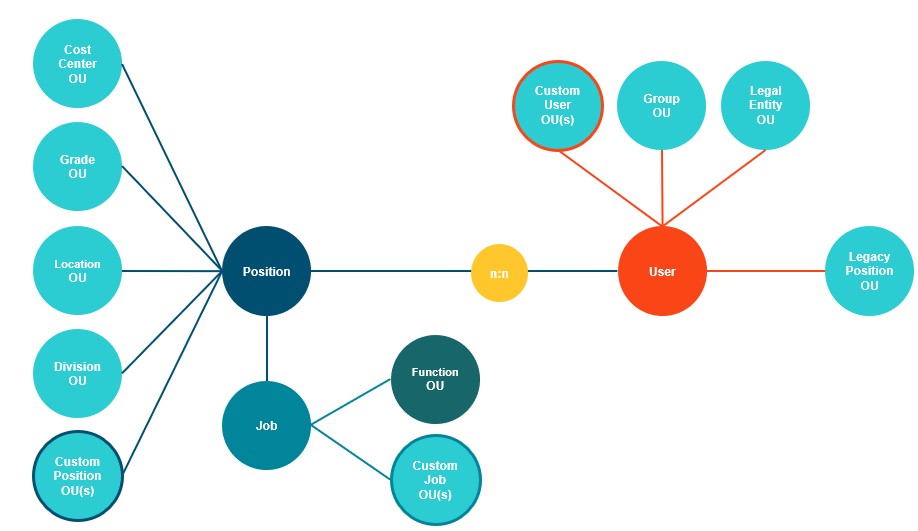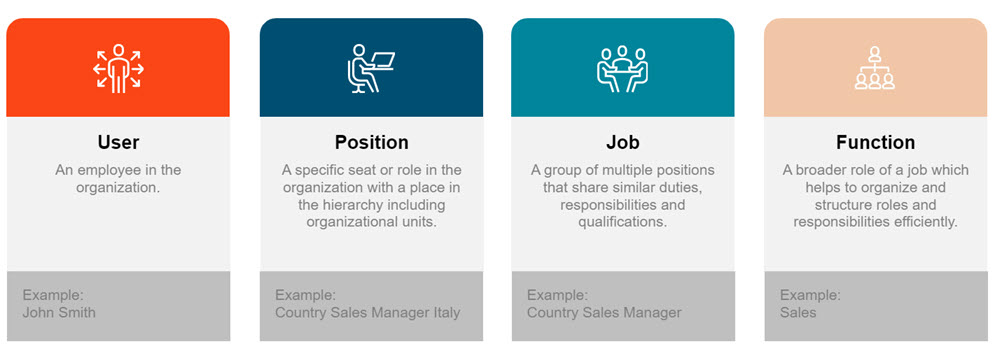Position Management – Overview and General Availability Announcement
Position Management helps organizations organize their workforce more efficiently by defining Positions as unique roles within the organization, categorizing them by Jobs and job-related functions, and structuring them by Organizational Units (OUs). This is achieved by moving from a user-centric structure to a position-centric structure that establishes a new hierarchical framework that streamlines talent processes and reporting.
With this release, Position Management is now in General Availability.

As a part of the Cornerstone HR product suite, Position Management in CSX provides an additional option to define, consolidate and map organizational data structures to meet the next levels of demand and flexibility.
This is the first building block towards a position-centered foundation that empowers administrators to structure their organization around positions.
Key Features
Position Management's key features are as follows:
- Manage Positions - Manage complex organizational scenarios and simplify recurring changes by using a position-based organizational structure
- Manage Jobs - Collect or group several Positions together in a Job and setup a functional job structure
- Position Hierarchy - Specify the parent Position for each Position and to setup a Position based hierarchy representable in a Company Chart.
- Multiple assignments - One Employee can be assigned to multiple Positions and one Position can be assigned to multiple employees.
- Organizational Unit Assignments - Manage the Organizational Hierarchy and assign Organization Units to Positions.
- Identify Vacancies - The new relationship structure between Positions and Employees allows to identify and manage Vacancies.
- Full Time Equivalent (FTE) Management - The ability to maintain and track the utilization of an Employee or Position to identify over-utilization and under-utilization.
- Effective Date of Assignments - Schedule future changes and keep all historic assignments in the organization.
Essential Concepts
Position Management applies the following essential concepts:

- User - An employee in the organization with a unique ID and assigned Positions, referred to as Incumbencies.
- Each Employee has at least one Position, but can also have several Positions.
- Although an Employee can have multiple incumbencies, they normally have only one Position per Employee.
- An Employee can be assigned to multiple Positions, but only one primary Position incumbency.
- A Position can be assigned to multiple Employees, but only one primary Employee (Primary incumbent).
- Reporting Relationships (Manager & Subordinates), general Job information and the Standard Organization Unit assignments are derived from the (primary) Position assignments.
- Position - A role or responsibility in the organization or one specific "seat" with a multilingual title, a unique ID, and an assigned Job.
- Positions in a company are to be filled by individual holders - Employees or Users.
- Although a Position can have multiple incumbents, it normally has only one single incumbent.
- An Employee can be assigned to multiple Positions, but only one primary Position.
- A Position can be assigned to multiple Employees, but only one primary Employee.
- The Position remains, even when the Employee leaves the Position.
- Each Position must be assigned to a Job. It is not possible to assign a Position to multiple Jobs.
- Reporting relationships (Manager & Subordinates) and assignments to different types of Organization Units can be defined for each Position.
- Job - A collection or grouping of multiple Positions with a multilingual title, a unique ID, and may have a collection of Positions assigned to it.
- The Job describes a number of different Positions which are engaged in similar work.
- A Job is not concrete but rather the basis for the creation of various Positions with similar tasks and characteristics.
- Jobs are used to group several related Positions together so that certain types of information and general characteristics can be defined at the Job level and then inherited by all assigned Positions.
- A Position must always be related to a Job; Jobs serve as the layer for attributes that apply to all associated Positions.
- Employees are not directly assigned to Jobs. The Job information can be pushed to Users through Position assignments.
- A functional structure can be defined for each Job.
- Function - Each Job has an OU assignment with a connection between the Organizational Data and Jobs.
- Assignment to a functional type of Organization Units can be defined for each Job.
- The Organization Unit memberships of a User are derived from the assigned Jobs of all Position assignments.
- The Unit Assignment remain, even when a Position changes the Job.
- Job Unit Assignment can be defined for a Functional organizational hierarchical structure.
In practice, the Position Management structure appears as follows:
